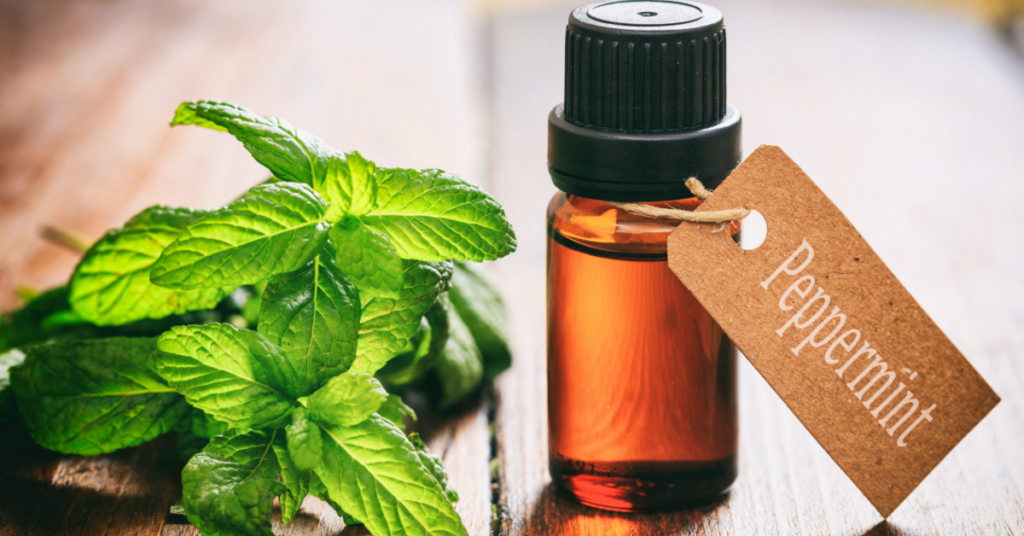Peppermint – Essential Oil
Peppermint (Mentha piperata)
An enduring plant, peppermint was used by the Egyptians and the Romans to treat digestive problems. In fact, dried leaves were found in excavated pyramids. Peppermint is known to repel certain insects, and some believe it can repel unwelcome rodents. It is used extensively in confectionary and for medicinal purposes, and commonly added to toothpastes due to its fresh invigorating minty taste.
Uses include:
Shock
Headache
Clearing head
Digestive
Cold and influenza (flu)
Muscular pain
Bad breath
Cautions
Do not use on babies and children under the age of 12 years old.
Do not use if you are pregnant.
Do not use if you are taking homeopathic treatment and store separately so as not to contaminate tablets.
Do not take too late at night as it can keep you awake, and used over a long period of time, it can interfere with sleep patterns.
Shock
Sometimes used in emergencies to treat shock.
Directions for use
Handkerchief: Put a couple of drops of pure essential oil onto a tissue or handkerchief and inhale as and when required.
Headache
Directions for use
Compress: Add 1 drop of pure essential oil of peppermint or 1 drop of peppermint and 1 drop of lavender to 1 litre of cold water. Lay sterile material on the surface of the water thus attracting a film of oil onto the cloth. Apply the material to the temple area of head as soon as pain occurs.
Clearing head
This oil is ‘cephalic’, which means it stimulates the brain and aids clearer thinking.
Directions for use
Oil burners: Sprinkle up to 5 drops of pure essential oil onto water and light burner.
Inhalation: Boil 1 litre of water and pour into a bowl, add up to 5 drops of pure essential oil, place a towel over your head and allow steam to rise and inhale.
Handkerchief: Put a drop of pure essential oil onto a tissue or handkerchief and inhale as and when required.
Digestive
Stimulates liver, intestines, and stomach, and is good for treating flatulence, colic, indigestion, and diarrhoea. It is antispasmodic, which relieves spasms in smooth muscle.
Directions for use
Massage: Mix 20 ml of carrier oil (sweet almond, grape seed) to 3 drops of pure essential oil and massage into abdominal area in a clockwise direction.
Colds and influenza (flu)
Peppermint oil is stimulating and warming.
Directions for use
Bath: Add up to 3 drops of pure essential oil to a bath of water and lie back and relax.
Inhalation: Boil 1 litre of water and pour into a bowl, add up to 10 drops of pure essential oil, place a towel over your head and allow steam to rise and inhale. Use once a week.
Handkerchief: Put a couple of drops of pure essential oil onto a tissue or handkerchief and inhale as and when required.
Massage: Mix 20 ml of carrier oil (sweet almond, grape seed) to 3 drops of pure essential oil and massage into abdominal area in a clockwise direction.
Oil burners: Sprinkle up to 5 drops of pure essential oil onto water and light the burner.
Footbath: Put 1 drop of oil in bowl of warm or hot water and soak feet for up to 15 minutes.
Muscular pain
Acts as an analgesic and stimulates circulation.
Directions for use
Bath: Add up to 3 drops of pure essential oil to a bath of water, and lie back and relax.
Massage: Mix 20 ml of carrier oil (sweet almond, grape seed) to 3 drops of pure essential oil, and massage into abdominal area in a clockwise direction.
Bad breath
Freshens breath.
Directions for use
Mouthwash: Add 1 drop of peppermint oil to a glass of water and swill round mouth. Always spit out solution, never swallow.
Further Information
Where grown: It is an perennial herb belonging to the Lamiaceae family. It has bushy green leaves with white flowers and is easy to grow. Grown commercially in Russia, Italy, and England. The UK grows the best peppermint due to its cool climate.
Parts used and method of extraction: It is harvested while the flowers are in bloom, and oil is extracted from the flowers, leaves, and stems by steam distillation.
Colour and smell: Greenish-yellow in colour with a fresh, pungent minty smell.
Active Ingredients: Limonene, mentone, methane, phellandrene.
Properties: Mildly antiseptic, stimulant, analgesic.
Mixes well with: Lavender, eucalyptus, tea tree, lemon, and rosemary.

